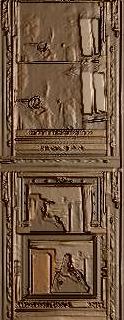Striker.

Son And Grandson Of Striker.
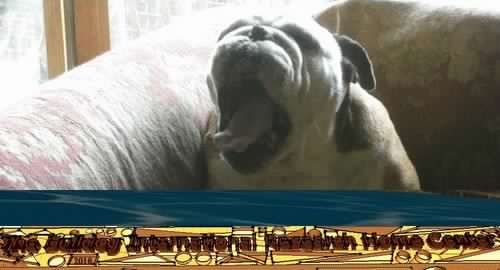
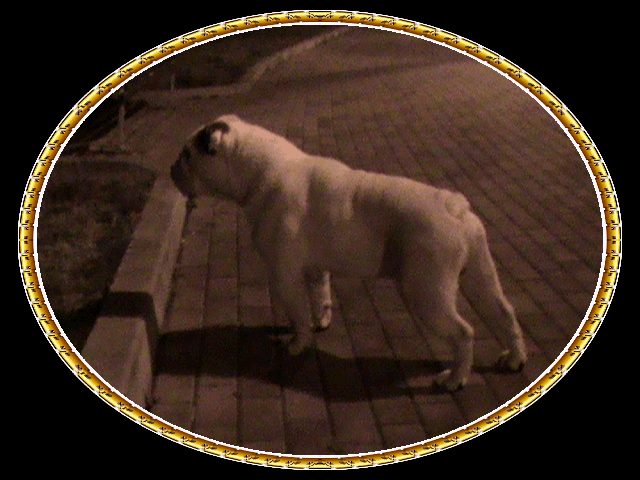
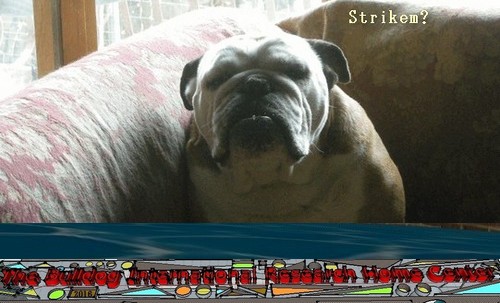


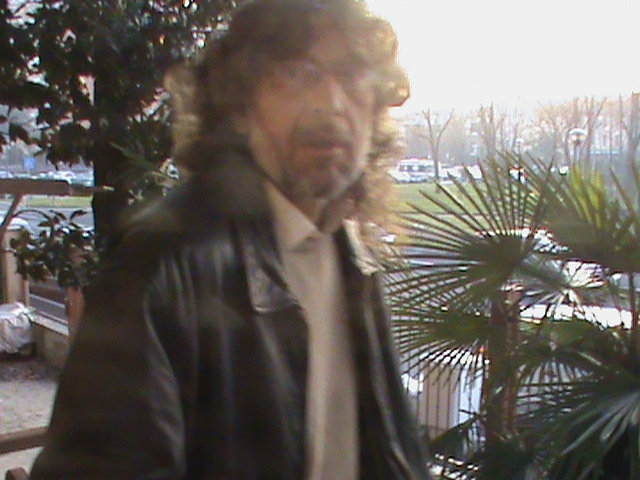 CONTACT: originalbulldogclub@gmail.com
CONTACT: originalbulldogclub@gmail.com


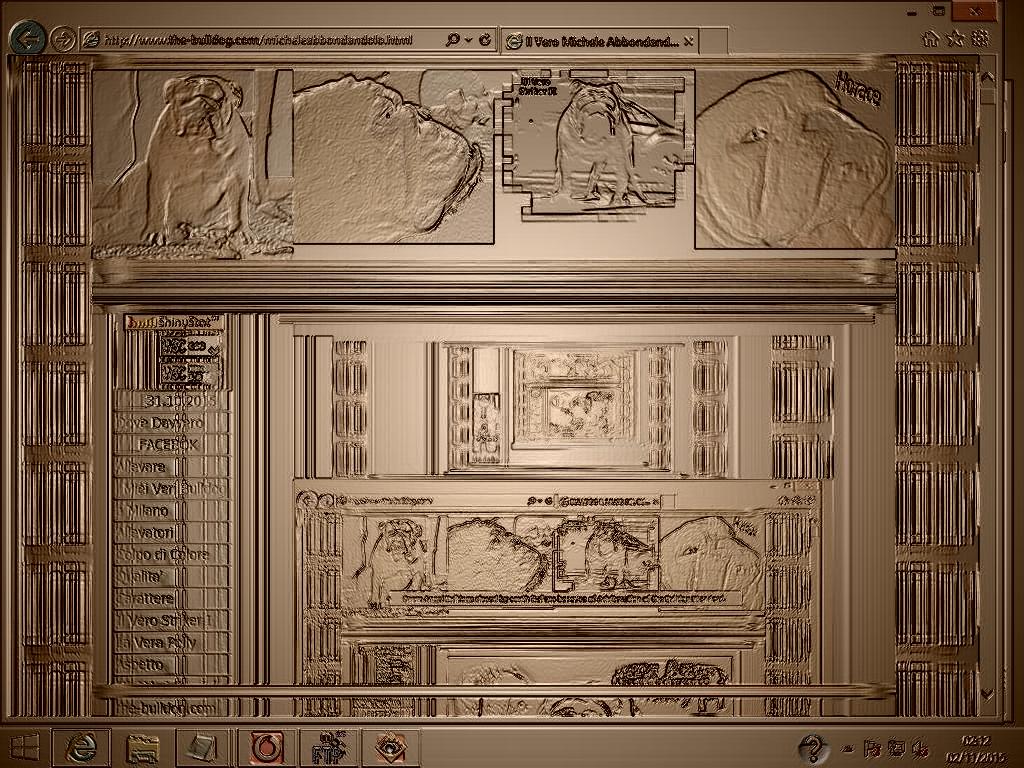
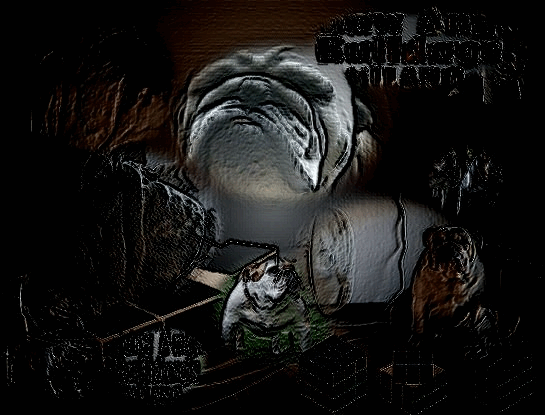


Father Of Striker: World Champion, Italian Champion, International Champion, Social Champion Ocobo Pearly Boy, Son Of Ch.Ocobo Tully. Mother: Tuffnuts Snow Angel, Daughter Of Ch. Tuffnuts Striker, Son Of Living Legend
Bulldog
Respect to the Bulldog Character The Female Bulldog is a Better Guardian Dog in the House, but has a more Friendly Relationship with other Dogs when go to Take a Ride in the Bull Dog Gardens, mostly if the are Young Bull Dogs or Young Dogs or still Better if they are Bull Dog Puppies. In my Pure Bulldog Blood Line the Bulldog Female as a Bulldog Character surely much Alert as the Guard Dogs then the Bulldog Male. The Bulldog Character of the Bulldog Male more than other is very Alert that nobody Touch his Bull Dog Food.
Respect to the Bulldog Morfology, Bulldog Size and Bulldog Weight the Bulldog Female has a Bulldog Morphology more Cleaned, is not a Big Bulldog, with the Head not so Big Bulldog Head, keeping better the Bulldog Proportion, is easier for the Bulldog Female respect to the Bulldog Male to be Thin with a Retract Stomach, not so Fat at the Bulldog Stomach Level. Also the Bulldog Female being with less Weight over the Short Bulldog Legs so Bulldog Females walk Better than the Bulldog Males. Because of this Reason often in the Bulldog Show The Bulldog Female when is in the Bulldog Ring is more near to the Bulldog Standard e Walks Better than the Bulldog Male so often wins the Best of Breed Premium in the Bull Dog Shows. I my Pure Breed English Bloodline is easily to have Bulldog Litters with an highest number of Bulldog Puppies Males respect to the number of the Bulldog Puppies Females
Respect to the Bulldog Health the Bulldog Female has less Dysplasia than the Bulldog Male, also the Bulldog Female has less Breathing Problems than the Bulldog Male. The Bulldog Females Die for a Bulldog Heat Stroke with more difficulty than the Bulldog Male and surely the Bulldog Female has less Congenital Bulldog Illnesses. That's the main reason why people choice the Bulldog Female respect to the Bulldog Males.
The Female English Bulldog of My Pure Breed Bulldog Bloodline get the Reproduction Period less than 2 times every 12 Months. My Pure Breed English Bulldog Females get the New Period never before than 6 months, but often with more than 6 months. When they get the Reproduction Period they don't look so much for Bulldog Males and never a Bulldog Female escape to the house for the Bulldog Studs, while are The Bulldogs Males that they feel more the Hot Period of the Bulldog Female, so is better to bring the Bulldog Male far from the Hot Bulldog Female to evite the Bulldog Heat Stoke.
Before than arrived the Use to Sterilize Bulldog Females there were the Habit to Say a Female English Bulldog value so much Gold as she Weight. I advice to do One Bulldog Litter before to Sterilize the Bulldog Female. She is very Feminine and with a Great Bulldog Mother Love for her Sweetie Buldog Pupies. The Reason why always less Private Bulldog Owner decide to make Pregnant the Bulldog Female to do a Bulldog Litter is the Caesarian Section with Total Anestesy. So Many Bulldog Owners don' t feel like to Risk the Bulldog Female Life to let her try the Satisfactions of the Bulldog Litters.
In this Bulldog Website there is a specific Bulldog Page over English Bulldog Names Female, as Daisy, Kandy, Daphne, Baboo, Lady, Zoe, Valentine, Khalifa, Pricilla, Charmer, Lola, Liz, Emma, Ginger, Olga, Moon, Duchess, Lily, Zelda, Sugar, Rita, Stella, Sweet September, Sara, Baby, Rose, Annie, Abea, Madam, Adela, Adisa, Agona, Leyland, Lucky Rose, Azzurra, Babka, Mercedes, Babsie, Mildred, Dimba, Beika, Cassandra, Brenda, Mika, Chelsie, Cheese, Kaya, Chantal, Daga, Matilda, Bambina, Marchella, Pearl, Dimboola, Bonnie, Cleo, Molly, Aisha, Whitney, Bystar, Liberty, Kira, Jennifer, Geraldine.
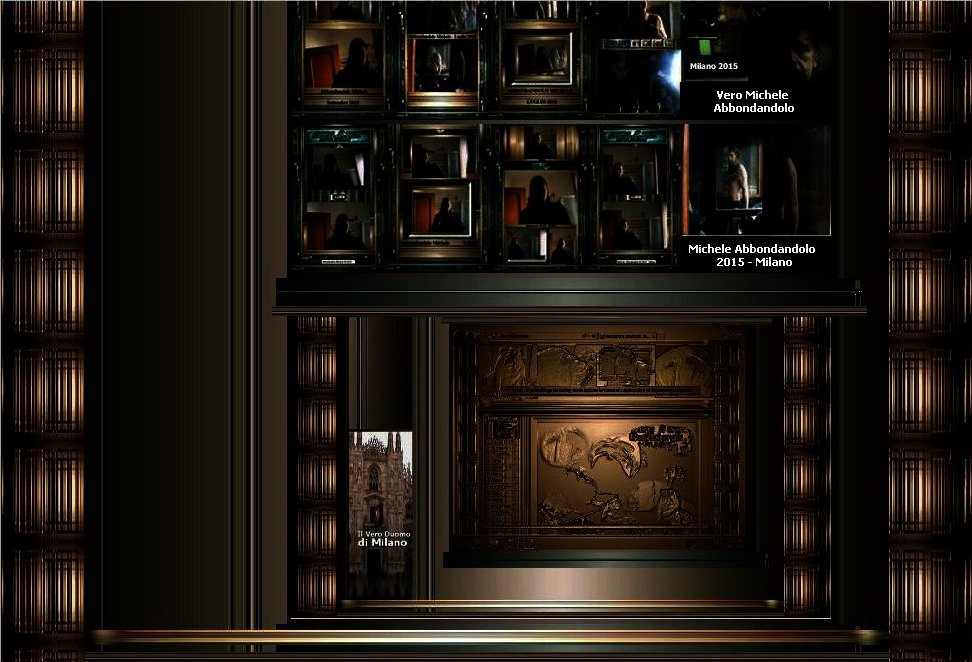
Sexual Size Dimorphism in Bulldogs Females and Bulldogs Males
The tendency for male-larger sexual size dimorphism (SSD) to scale with body size a pattern termed Rensch's rule has been empirically supported in many animal lineages. Nevertheless, its theoretical elucidation is a subject of debate. Here, we exploited the extreme morphological variability of domestic dog (Canis familiaris) to gain insights into evolutionary causes of this rule.
Methodology/Principal Findings
We studied SSD and its allometry among 74 breeds ranging in height from less than 19 cm in Chihuahua to about 84 cm in Irish wolfhound. In total, the dataset included 6,221 individuals. We demonstrate that most dog breeds are male-larger, and SSD in large breeds is comparable to SSD of their wolf ancestor. Among breeds, SSD becomes smaller with decreasing body size. The smallest breeds are nearly monomorphic.
Significance
SSD among dog breeds follows the pattern consistent with Rensch's rule. The variability of body size and corresponding changes in SSD among breeds of a domestic animal shaped by artificial selection can help to better understand processes leading to emergence of Rensch's rule.
Daniel Frynta, Jana Baudysova, Petra Hradcova, Katerina Faltusova, Lukas Kratochvi
Department of Zoology, Faculty of Science, Charles University in Prague, Prague, Czech Republic, 2 Department of Ecology, Faculty of Science, Charles University in Prague, Prague, Czech Republic
References
Donoghue JP. Connecting cortex to machines: recent advances in brain interfaces. Nat. Neurosci. 2002;5(Suppl):1085 88.
Nicolelis MA. Brain-machine interfaces to restore motor function and probe neural circuits. Nat. Rev. Neurosci. 2003;4(5):417 22.
Nicolelis MA, Chapin JK. Controlling robots with the mind. Sci. Am. 2002;287(4):46 53.
4.
Schwartz AB. Cortical neural prosthetics. Annu. Rev. Neurosci. 2004;27:487 507.
5.
Wolpaw JR, Birbaumer N, McFarland DJ, Pfurtscheller G, Vaughan TM. Brain-computer interfaces for communication and control. Clin. Neurophysiol. 2002;113(6):767 791.
6.
Leuthardt EC, Miller KJ, Schalk G, Rao RP, Ojemann JG. Electrocorticography- based brain computer interface The Seattle experience. IEEE Trans. Neural. Syst. Rehabil. Eng. 2006;14(2):194 198.
7.
Leuthardt EC, Schalk G, Wolpaw JR, Ojemann JG, Moran DW. A brain computer interface using electrocorticographic signals in humans. J. Neural Eng. 2004;1(2):63 71.
8.
Carmena JM, Lebedev MA, Crist RE, O Doherty JE, Santucci DM, Dimitrov DF, Patil PG, Henriquez CS, Nicolelis MA. Learning to control a brain-machine interface for reaching and grasping by primates. PLoS Biol. 2003;1(2):E42.
9.
Chapin JK, Moxon KA, Markowitz RS, Nicolelis MA. Real-time control of a robot arm using simultaneously recorded neurons in the motor cortex. Nat. Neurosci. 1999;2(7):664 70.
10.
Taylor DM, Tillery SI, Schwartz AB. Direct cortical control of 3D neuroprosthetic devices. Science. 2002;296(5574):1829 32.
11.
Wessberg J, Stambaugh CR, Kralik JD, Beck PD, Laubach M, Chapin JK, Kim J, Biggs SJ, Srinivasan MA, Nicolelis MA. Real-time prediction of hand trajectory by ensembles of cortical neurons in primates. Nature. 2000;408(6810):361 65.
12.
Donoghue JP, Nurmikko A, Black M, Hochberg LR. Assistive technology and robotic control using motor cortex ensemble-based neural interface systems in humans with tetraplegia. J. Physiol. 2007;579(3):603.
13.
Elwassif MM, Kong Q, Vazquez M, Bikson M. Bio-heat transfer model of deep brain stimulation-induced temperature changes. J. Neural Eng. 2006;3:306 15.
14.
Buzsaki G. Large-scale recording of neuronal ensembles. Nat. Neurosci. 2004;7(5):446 51.
15.
Holt GR, Koch C. Electrical interactions via the extracellular potential near cell bodies. J. Comput. Neurosci. 1999;6(2):169 84.
16.
Nicolelis MA, Ghazanfar AA, Faggin BM, Votaw S, Oliveira LM. Reconstructing the engram: simultaneous, multisite, many single neuron recordings. Neuron. 1997;18(4):529 37.
17.
Serruya MD, Hatsopoulos NG, Paninski L, Fellows MR, Donoghue JP. Instant neural control of a movement signal. Nature. 2002;416(6877):141 42.
18.
Harrison RR, Cameron C. A low-power low-noise CMOS amplifier for neural recording applications. IEEE J. Solid-State Circuits. 2003;38(6):958 65.
19.
Neihart NM, Harrison RR. Micropower circuits for bidirectional wireless telemetry in neural recording applications. IEEE Trans. Biomed. Eng. 2005;52 (11):1950 59.
20.
Olsson RH 3rd, Buhl DL, Sirota AM, Buzsaki G, Wise KD. Band-tunable multiplexed integrated circuits for simultaneous recording and stimulation with microelectrode arrays. IEEE Trans. Biomed. Eng. 2005;52(7):1303 11.
21.
Song YK, Patterson WR, Bull CW, Beals J, Hwang N, Deangelis AP, Lay C, McKay JL, Nurmikko AV, Fellows MR, Simeral JD, Donoghue JP, Connors BW. Development of a chipscale integrated microelectrode/microelectronic device for brain implantable neuroengineering applications. IEEE Trans. Neural Syst. Rehabil. Eng. 2005;13(2):220 26.
22.
Perelman Y, Ginosar R. Analog front-end for multichannel neuronal recording system with spike & LFP separation. J Neurosci Methods. 2005
23.
Obeid I, Morizio JC, Moxon KA, Nicolelis MAL, Wolf PD. Two multichannel integrated circuits for neural recording and signal processing. IEEE Trans. Biomed. Eng. 2003;50(2):255 58.
24.
Harrison RR, Charles C. A low-power low-noise CMOS amplifier for neural recording applications. IEEE J. Solid-State Circuits. 2003;38(6):958 65.
25.
Lewicki MS. A review of methods for spike sorting: the detection and classification of neural action potentials. Network Computation Neural Syst. 1998;9(4):53 78.
26.
Harrison RR, Watkins PT, Kier RJ, Lovejoy RO, Black DJ, Greger B, Solzbacher F. A low-power integrated circuit for a wireless 100-electrode neural recording system. IEEE J. Solid-State Circuits. 2007;42(1):123 33.
27.
Olsson RH III, Wise KD. A three-dimensional neural recording microsystem with implantable data compression circuitry. IEEE J. Solid-State Circuits. 2005;40(12):2796 804.
28.
Won DS, Wolf PD. A simulation study of information transmission by multiunit microelectrode recordings. Network Computational Neural Syst. 2004;15:29 44.
29.
Rizk M, Obeid I, Callender SH, Wolf PD. A single-chip processing and telemetry engine for an implantable 96-channel neural data acquisition system. J. Neural Eng. 2007;4:309 21.
30.
Won DS, Chong DY, Wolf PD. Effects of spike sorting error on information content in multi-neuron recordings. Conference Proceedings First International IEEE EMBS Conference on Neural Engineering; Washington, DC: IEEE Press; 2003. pp. 618 621.
31.
Shannon CE. A mathematical theory of communication. Bell Sys. Tech. J. 1948;27:379 423.
32.
Gosalia K, Weiland J, Humayun M, Lazzi G. Thermal elevation in the human eye & head due to the operation of a retinal prosthesis. IEEE Trans. Biomed. Eng. 2004;51(8):1469 77.
33.
Wolf PD, Nicolelis MAL. National Institutes of Health; http://www.ninds.nih.gov/funding/research/npp/niw06_poster_abstracts.pdf.
34.
Puers R, Vandevoorde G. Recent progress on transcutaneous energy transfer for total artificial heart systems. Artif. Organs. 2001;25(5):400 405.
35.
Pennes HH. Analysis of tissue and arterial blood temperatures in the resting forearm. J. Appl. Physiol. 1948;1(2):93 122.
36.
Lazzi G. Thermal effects of bioimplants. IEEE Eng. Med. Biol. Mag. 2005;24(5):75 81.
37.
Kiyatkin EA. Brain hyperthermia during physiological and pathological conditions: causes, mechanisms, and functional implications. Curr. Neurovasc. Res. 2004;1:77 90.
38.
IEEE. IEEE Standard C95.1. 1999. Standard for Safety Levels With Respect to Human Exposure to Radio Frequency Electromagnetic Fields, 3 kHz to 300 GHz.
39.
Matsuki H, Matsuzaki T, Satoh T. Simulations of temperature rise on transcutaneous energy transmission by non-contact energy transmitting coils. IEEE Trans. Magnetics. 1993;29(6):3334 36.
40.
Geselowitz DB, Hoang QT, Gaumond RP. The effects of metals on a transcutaneous energy transmission system. IEEE Trans. Biomed. Eng. 1992;39(9):928 34.
41.
Tang Q, Tummala N, Gupta SKS, Schwiebert L. Communication scheduling to minimize thermal effects of implanted biosensor networks in homogeneous tissue. IEEE Trans. Biomed. Eng. 2005;52(7):1285 94.
42.
Gabriel S, Lau RW, Gabriel C. The dielectric properties of biological tissues. II. Measurements in the frequency range 10 Hz to 20 GHz. Phys. Med. Biol. 1996;41 (11):2251 69.
43.
Ibrahim TS, Abraham D, Rennaker R. Electromagnetic power absorption and temperature changes due to brain machine interface operation. Ann Biomed Eng. 2007
44.
Christ A, Samaras T, Klingenb ck A, Kuster N. Characterization of the electromagnetic near-field absorption in layered biological tissue in the frequency range from 30 MHz to 6000 MHz. Phys. Med. Biol. 2006;51:4951 65.
45.
Kuster N, Balzano Q. Energy absorption mechanism by biological bodies in the near field of dipole antennas above 300 MHz. IEEE Trans. Veh. Technol. 1992;41(1):17 23.
46.
Samaras T, Christ A, Kuster N. Worst case temperature rise in a one-dimensional tissue model exposed to radiofrequency radiation. IEEE Trans. Biomed. Eng. 2007;54(3):492 496.
47.
Kim J, Rahmat-Samii Y. Implanted antennas inside a human body: simulations, designs, and characterizations. IEEE Trans. Microwave Theory Techniques. 2004;52(8):1934 43.
48.
Lazzi G, DeMarco SC, Wentai L, Weiland JD, Humayun MS. Computed SAR and thermal elevation in a 0.25-mm 2-D model of the human eye and head in response to an implanted retinal stimulator. Part II. Results. IEEE Trans. Antennas Propagation. 2003;51(9):2286 95.
49.
Jain MK, Wolf PD. Temperature-controlled and constant-power radio-frequency ablation: what affects lesion growth? IEEE Trans. Biomed. Eng. 1999;46(12):1405 12.
50.
Seese TM, Harasaki H, Saidel GM, Davies CR. Characterization of tissue morphology, angiogenesis, and temperature in the adaptive response of muscle tissue to chronic heating. Lab. Invest. 1998;78(12):1553 62.
51.
Davies CR, Fukumura F, Fukamachi K, Muramoto K, Himley SC, Massiello A, Chen JF, Harasaki H. Adaptation of tissue to a chronic heat load. ASAIO J. 1994;40(3):M514 17.
52.
Okazaki Y, Davies CR, Matsuyoshi T, Fukamachi K, Wika KE, Harasaki H. Heat from an implanted power source is mainly dissipated by blood perfusion. ASAIO J. 1997;43(5):M585 88.
53.
Kiyatkin EA, Brown PL, Wise RA. Brain temperature fluctuation: a reflection of functional neural activation. Eur. J. Neurosci. 2002;16(1):164 68.
54.
Goldstein LS, Dewhirst MW, Repacholi M, Kheifets L. Summary, conclusions and recommendations: adverse temperature levels in the human body. Int. J. Hyperthermia. 2003;19(3):373 84.
55.
Haveman J, Sminia P, Wondergem J, van der Zee J, Hulshof M. Effects of hyperthermia on the central nervous system: what was learnt from animal studies? Int. J. Hyperthermia. 2005;21(5):473 87.
56.
Dewey WC. Arrhenius relationships from the molecule and cell to the clinic. Int. J. Hyperthermia. 1994;10(4):457 83.
57.
Dewhirst MW, Viglianti BL, Lora-Michiels M, Hanson M, Hoopes PJ. Basic principles of thermal dosimetry & thermal thresholds for tissue damage from hyperthermia. Int. J. Hyperthermia. 2003;19(3):267 94.
58.
Xie T, McCann UD, Kim S, Yuan J, Ricaurte GA. Effect of temperature on dopamine transporter function & intracellular accumulation of methamphetamine: implications for methamphetamine-induced dopaminergic neurotoxicity. J. Neurosci. 2000;20(20):7838.
59.
Gao BO, Franken P, Tobler I, Borbely AA. Effect of elevated ambient temperature on sleep EEG spectra and brain temperature in the rat. Am J Physiol Regul Integr Comp Physiol. 1995;268(6):1365 73.
60.
Carlisle HJ, Ingram DL. The effects of heating and cooling the spinal cord and hypothalamus on thermoregulatory behaviour in the pig. J. Physiol. 1973;231(2):353 64. [PMC free article]
61.
Magoun HW, Harrison F, Brobeck JR, Ranson SW. Activation of heat loss mechanisms by local heating of the brain. J. Neurophysiol. 1938;1(2):101 14.
62.
Lindquist S, Craig EA. The heat-shock proteins. Annu. Rev. Genet. 1988;22(1):631 77.
63.
Arora H, Klemmer N, Morizio JC, Wolf PD. Enhanced phase noise modeling of fractional-N frequency synthesizers. IEEE Trans. Circuits Syst. 2005;52(2):379 95.
Shu, Y., Habchi, J., Costanzo, S., Padilla, A., Brunel, J., Gerlier, D., *Oglesbee, M., *Longhi, S. (2012). Plasticity in structural and functional interactions between the phosphoprotein and nucleoprotein of measles virus. Journal of Biological Chemistry (in press). * co-senior authors
Moore, S., Kim, M.Y., Maiolini, A., Tipold, A., Oglesbee, M. (2012). Extracellular hsp70 release in canine steroid responsive meningitis-arteritis. Veterinary Immunology & Immunopathology 145(1-2):129-33.
Kim, D., Huey, D., Oglesbee, M., Niewiesk, S. (2011). Insights into the regulatory mechanism controlling the inhibition of vaccine-induced seroconversion by maternal antibodies. Blood 117(23):6143-51.
Oglesbee, M., Niewiesk, S. (2011). Measles virus neurovirulence & host immunity. Future Virology 6(1):85-99
Longhi, S., Oglesbee, M. (2010). Structural disorder within the measles virus nucleoprotein and phosphoprotein. Protein and Peptide Letters 17(8):961-78.
Couturier, M., Buccellato, M., Costanzo, S., Bourhis, J.M., Shu, Y., Nicaise, M., Desmadrill, M., Flaudrops, C., Longhi, S., Oglesbee, M. (2010). High affinity binding between hsp70 and the C-terminal domain of the measles virus nucleoprotein requires an hsp40 co-chaperone. Journal of Molecular Recognition 23(3):301-15.
Carsillo, T., Carsillo, M., Traylor, Z., Rajala-Schultz, P., Popovich, P., Niewiesk, S., Oglesbee, M. (2009). Major histocompatibility complex haplotype determines hsp70-dependent protection against measles virus neurovirulence. Journal of Virology 83(11):5544-5555.
Awad, H., Suntres, Z., Heijmans, J., Smeak, D., Bergdall-Costell, V., Cristofi, F.L., Magro, C., Oglesbee, M. (2008). Intracellular and extracellular expression of the major inducible 70 kDa heat shock protein in experimental ischemia-reperfusion injury of the spinal cord. Experimental Neurology 212:275-284.
Carsillo, T., Traylor, Z., Choi, C., Niewiesk, S., Oglesbee, M. (2006). Hsp72, a host determinant of measles virus neurovirulence. Journal of Virology 80(22):11031-11039.
Carsillo, T., Zhang, X., Vasconcelos, D., Niewiesk, S., Oglesbee, M. (2006). A single codon in the nucleocapsid protein C-terminus contributes to in vitro & in vivo fitness of Edmonston measles virus. Journal of Virology 80(6): 2904-2912.
Oglesbee, M.J., Herdman, A.V., Passmore, G.G., Hoffman, W.H. (2005). Diabetic ketoacidosis increases extracellular levels of the major inducible 70 kDa heat shock protein. Clinical Biochemistry 38(10):900-4.
Zhang, X., Bhouris, J.-M., Longhi, S., Carsillo, T., Buccellato, M., Morin, B., Canard, B., Oglesbee, M. (2005). Hsp72 recognizes a P binding motif in the measles virus N protein C-terminus. Virology 337:162-174.
Carsillo, T., Carsillo, M., Niewiesk, S., Vasconcelos, D., Oglesbee, M. (2004). Hyperthermic pre-conditioning promotes measles virus clearance from brain in a mouse model of persistent infection. Brain Research 1004:73-82.
Zhang, X., Oglesbee, M. (2003). Use of surface plasmon resonance for the measurement of low affinity binding interactions between hsp72 and the measles virus nucleocapsid protein. Biological Procedures Online 5(1):170-181.
Zhang, X., Glendening, C., Linke, H., Parks, C.L., Brooks, C., Udem, S.A., Oglesbee, M. (2002). Identification and characterization of a regulatory domain on the carboxyl terminus of the measles virus nucleocapsid protein. Journal of Virology 76(17):8737-8746.
Oglesbee, M.J., Alldinger, S., Vasconcelos, D., Diehl, K., Shinko, P., Baumg rtner, W., Tallman, R., Podell, M. (2002). Intrinsic thermal resistance of the canine brain. Neuroscience 113(1):55-64.
Diehl, K.A., Crawford, E., Shinko, P.D., Tallman, R.D., Oglesbee, M.J. (2000). Alterations in hemostasis associated with hyperthermia in a canine model. American Journal of Hematology 64(4):262-270.
Oglesbee, M.J., Diehl, K., Crawford, E., Kearns, R., and Krakowka, S. (1999). Whole body hyperthermia: effects upon canine immune and hemostatic functions. Veterinary Immunology and Immunopathology 69:185-199.
Kearns, R.J., Ringler, S., Krakowka, S., Tallman, R. Sites, J., Oglesbee, M.J. (1999). The effects of extracorporeal whole body hyperthermia on the functional and phenotypic features of canine peripheral blood mononuclear cells. Clinical and Experimental Immunology 116:188-192.
Vasconcelos, D., Cai, X.H., Oglesbee, M.J. (1998). Constitutive over-expression of the major inducible 70 kDa heat shock protein mediates large plaque formation by measles virus. Journal of General Virology 79:2239-2247.
Heller, M., Vasconcelos, D., Cummins, J., Oglesbee, M. (1998). Interferon-? inhibits the emergence of cellular stress response-dependent morbillivirus large plaque variants. Antiviral Research 38:195-207.
Vasconcelos, D., Norrby, E., Oglesbee, M. (1998). The cellular stress response increases measles virus-induced cytopathic effect. Journal of General Virology 79:1769-1773.
Liu, Z., Huntley, C.C., De, B.P., Das, T., Banerjee, A.K., Oglesbee, M. (1997). Phosphorylation of canine distemper virus P protein by protein kinase C-? and casein kinase II. Virology 232(1): 198-206.
Andrews, J., Newbound, G., Oglesbee, M., Brady, J., Lairmore, M. (1997). The cellular stress response enhances HTLV-1 basal gene expression through the basal core promoter of the long terminal repeat. Journal of Virology 71(1): 741-745.
Oglesbee, M.J., Liu, Z., Kenney, H., Brooks, C. (1996). The highly inducible member of heat shock proteins increases canine distemper virus polymerase activity. Journal of General Virology 77:2125-2135.
Andrews, J., Oglesbee, M., Trevino, A., Guyot, D., Newbound, G., Lairmore, M. (1995). Enhanced human T cell lymphotrophic virus type I expression following induction of the cellular stress response. Virology 208:816-820.
Oglesbee, M., and Krakowka, S. (1993). The cellular stress response induces selective intranuclear trafficking and accumulation of morbillivirus major core protein. Laboratory Investigation 68(1):109-117.
Oglesbee, M., Kenney, H., Kenney, T., and Krakowka, S. (1993). Enhanced production of morbillivirus gene-specific RNAs following induction of the cellular stress response in stable persistent infection. Virology 192:556-567.
Oglesbee, M. (1992). Intranuclear inclusions in paramyxovirus-induced encephalitis: evidence for altered nuclear body differentiation. Acta Neuropathologica 84:407-415.
Oglesbee, M., Ringler, S., & Krakowka, S. (1990). Interaction of canine distemper virus nucleocapsid variants with 70k heat shock proteins. Journal of General Virology 71:1585-1590.
Oglesbee, M., Tatalick, L., Rice, J., & Krakowka, S. (1989). Isolation and characterization of canine distemper virus nucleocapsid variants. Journal of General Virology 70:2409-2419.
.
The French Bulldog Females belong from the Bulldog and more Exactly the Female French Bulldog take her Genealogy by the Miniture Bulldogs that were imported in France by English Women Working in France. The Females French Bulldog are similar as Bulldog Health to the Bulldog Cousins and they need the Bulldog Caesarian Section. The Black Bulldog Females, Black Bulldog is the other Bulldog Name of the French Bulldog, have an evident Morphological Difference with the French Bulldog Male as the English Bulldogs Females.
.
The Female American Bulldog descends directly by the Original Bulldogs imported in the finish of the 18th Century in USA, before that the English Bulldog were crossed with Pugs, so they are mixed with Pugs as the English Cousins and they don' t have the Bulldog Caracter and Bulldog Characteritics similar to Pugs. The American Bulldog Female is a very good Guard Dog, she can Live in the Garden e don't Need a Caesarian Section to make an American Bulldog Litter, the Brachycefalic Syndrom is much less than French Bulldogs or English Bulldogs, The American Bulldog Females are suffering much less during the Summer, because of this higher resistence The American Bulldog Female can do a Natural Bulldog Stud without the Bulldog Artificial Insemination.
.
The English Bulldog Girls is a Very Family Dog, she loves the Member of the Family and the House and she need more to be beside the Bulldog Owner. Anyway when the English Bulldog Girls do the Bulldog Litter often they make mistakes with the Bulldog Pupies and if the Bulldog Breeder don' t what she does she often kills some Buldog Puppy for the Bulldog Weight or for the Lack of Air while she Heavily Seat over the New Born Bulldog Pupies to Warm them During the Cold Nights.
- ___Hoaxer_
-

- __Page1
-

- Souvenirs Online
-

- ____ Hocum
-

- _____Grooming
-

- Homomorphism
-

- ____Houseboy
-

- ___Hooky
-

- ___House-Room
-

- _____Bull
-

- ____Hulking
-

- _____Hue
-

- ____Bulldog
-

- ____Hobby
-

- _____Bully
-

- ____Bullies
-

- ____Puppy
-

- ___Rules
-

- ___Hushed
-

- ____Skull
-

- ___Hygiene
-

- __Hygeian
-

- ___Illness
-

- ____Sickness
-

- ___Healing
-

- Book Exchange
-

- ____Cows
-

- Funny Calls
-

- ___Kennels
-

- ___Concerns
-

- _____Price
-

- ___Expo
-

- ____Girl
-

- ___Science
-

- ___For Sell
-

- ____Shop
-

- Cheap Puppy
-

- _____Clubs
-

- ____Looks
-

- ____Philosophy
-

- ____News
-

- Hoary
-

- Rearer
-

- Concise
-

- Mini-Bulldogs
-

- Skin
-

- Pup
-

- Bulldogs
-

- __Nelson
-

- ___Polly
-

-



-

- ___Striker

-

